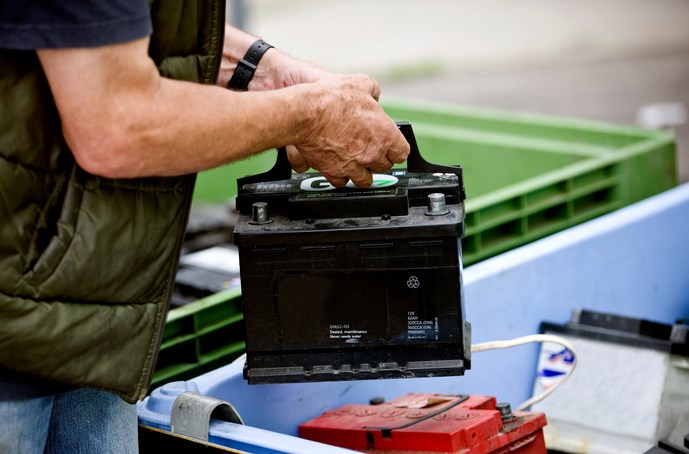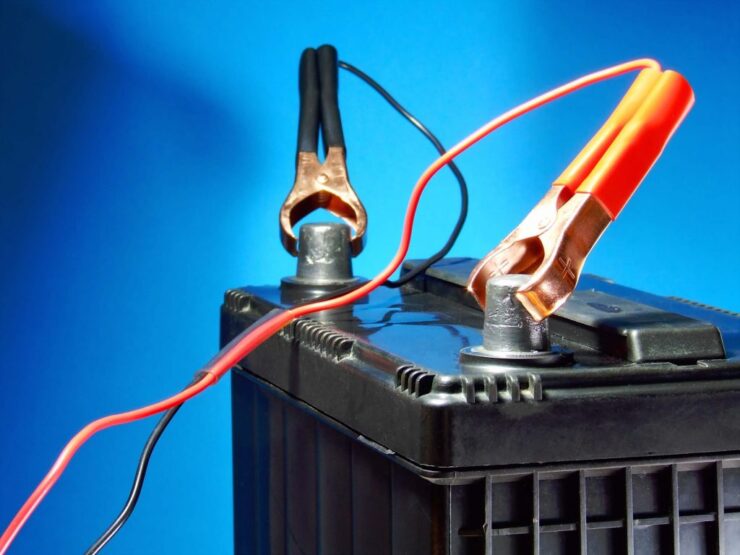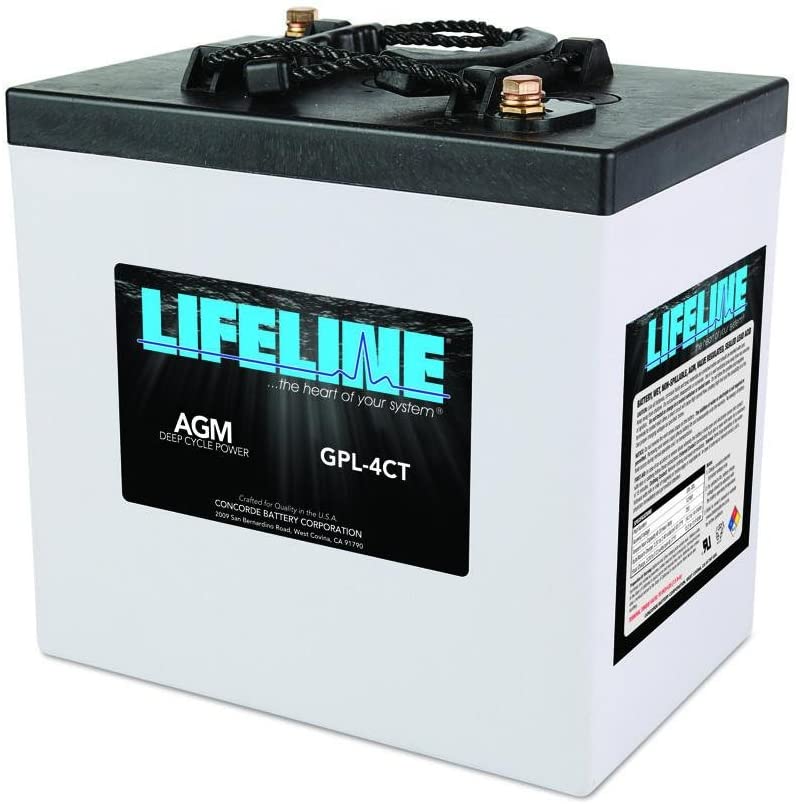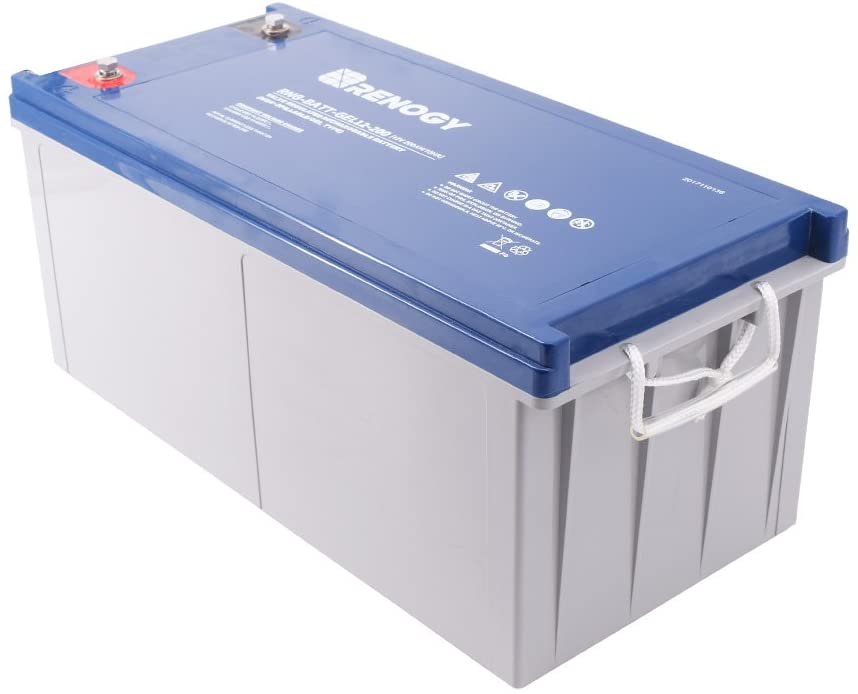For camping and long-time traveling, you need an RV (a recreational vehicle) for that purpose. For a long time traveling in an RV, you need a better battery, probably a bigger and dry one too for that manner.
The RV battery is a vital component of the rig’s setup. It powers all the electrical components. For example, refrigerators, power the entire HVAC system.
What is an RV Battery Made Out Of?

First and foremost, you need to know that an RV battery is contrasted out of two entirely different systems. These systems are the DC system of 12-volt and AC system of 120-volt.
Using the DC system of 120-volt you can run major gadgets and appliances. For appliances like a refrigerator and air conditioner, you need the battery to be hooked up to shore power. (it’s likely that you will be at a developed campground so this wouldn’t be an issue) The 12-volt system will charge when it is hooked up.
The smaller system of the battery can be used to power things like interior lights, water system,s and overhead fans. The smaller system can be used without hooking up the RV battery to any generator.
Now let’s dive into some common things that you should know regarding RV batteries.
Things You Need To Know
1. Types of RV batteries
There are a few types of RV batteries available in the market. Some common choices that you will encounter are:
- Deep-cycle batteries: these are lead-acid batteries that you are likely to find in golf carts and boats. As compared to car batteries, deep cycle batteries can produce a steady current for a longer duration of time. There are quite a few subtypes of deep-cycle batteries:
-
- Flooded wet-cell batteries
- Absorbed glass mat batteries aka AGM batteries
- Gel-type batteries
Each type has different maintenance needs and quirks.
- Lithium Batteries: a lot of campers that rig the RV’s for the solar power generations tend to upgrade and start using lithium batteries. These are expensive but offer more benefits as compared to other batteries. Some advantages of lithium batteries are:
-
- Weight lighter
- Size is smaller
- Don’t require any tedious maintenance
2. RV Battery Bank
A battery bank is referred to the setup that you get when you attach two or more batteries. This setup increases the overall voltage output and is useful when you require more power.

3. Maintenance of RV Battery
The maintenance of the battery will depend on the type that you purchase. For example, lithium batteries hardly ever require any keeping up.
You can refer to the maintenance instructions to get an idea about what you need to do. Hare the basics that will help you maintain the battery:
- Maintaining the levels of electrolyte in flooded-cell batteries
- Regularly clean the terminals of the battery to get rid of corrosion
- To increase sulfation let the battery get low in charge
- Remember to recharge the battery often
4. Storing RV Batteries
In case you store away the battery, it will discharge on its own and will get flat. So, you need to take care of the battery in order to increase its life span.
What you need to do is check the battery voltage every month plus charge it in case the voltage has fallen below 80%.
5. Monitors on RV Batteries
Assessing the charge state of the battery can get tough when you are deprived of a monitor. The monitor will measure plus display the energy that is flowing out and in. it will also show you the discharge and charge state.
Either your battery will come installed with a monitor or you can purchase one and install it. The LCD monitors will display all critical data about the battery.

6. Charging the RV Battery
The RV battery is charged when it is connected to a power outlet. A converter is installed in every RV battery that converts power from the grid into DC power of 12-volt.
Batteries can also get charged when the motor is running in the vehicle or when it is connected to a running generator.
Make sure to not drain the water levels of wet-cell batteries. Plus, if you let the charge on the battery run low you will increase the RV batteries’ lifespan.

7. Installing an RV battery
In order to install the battery, you will have to turn off all the appliances that draw power from the RV Battery. Even minor appliances such as overhead lights need to be turned off. After checking where the current RV battery is you need to disconnect it. Make sure to take the negative end out first and then take the positive off.
After cleaning the cables and the terminals of the battery you can insert the new and charges RV battery by attaching cables to it. Make sure to install the hold-down hardware if the battery had some. Now the battery is ready to be used.
Plus, with all these tips and tricks you are ready to make the most of your RV battery. You can also check out other reviews and tricks by CLICKING HERE.



